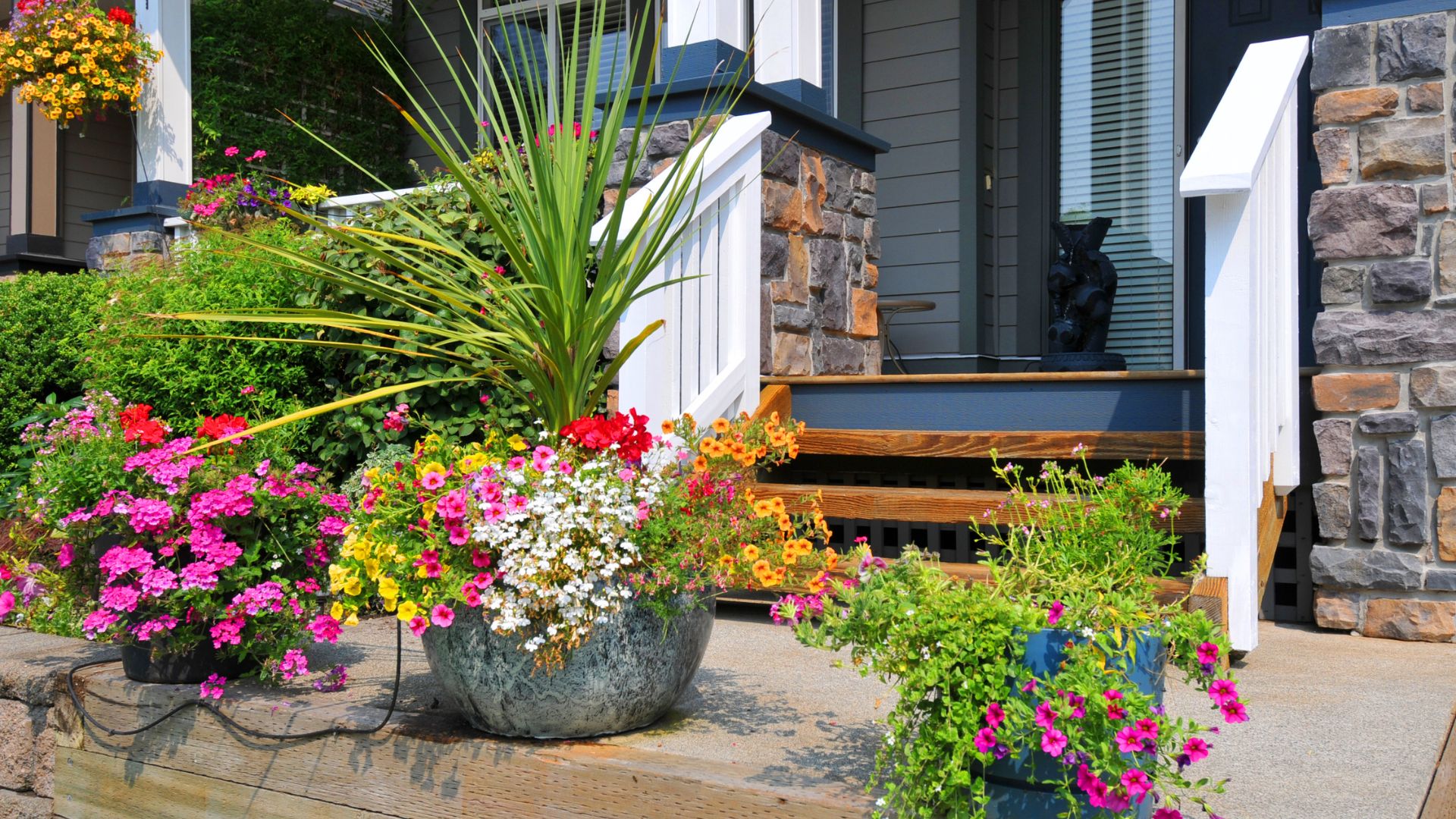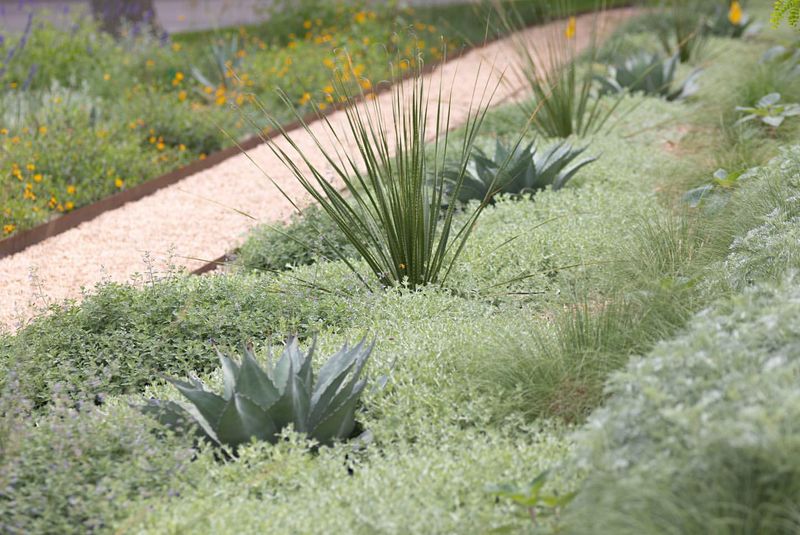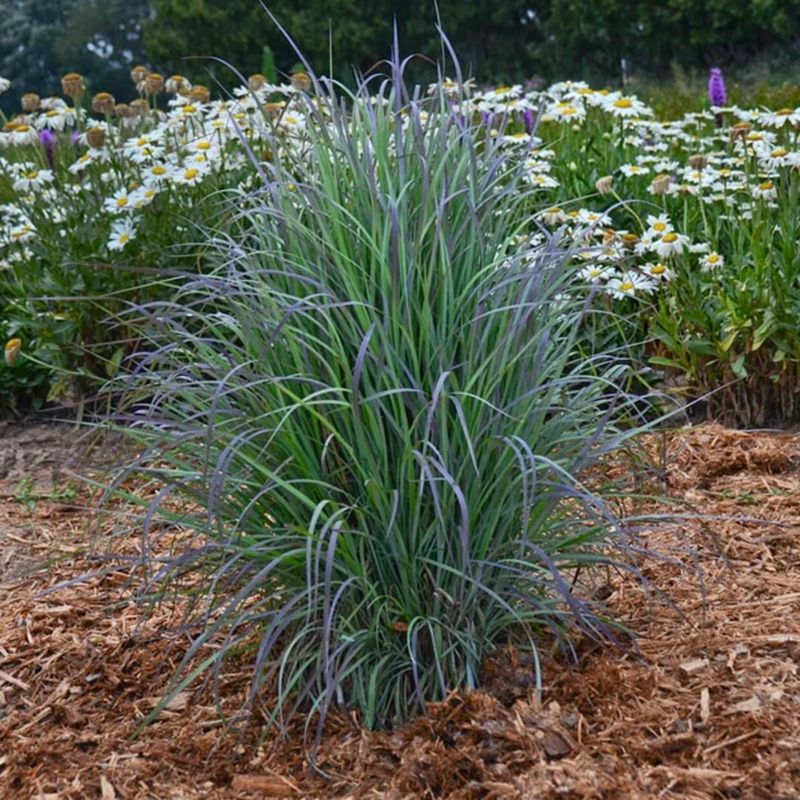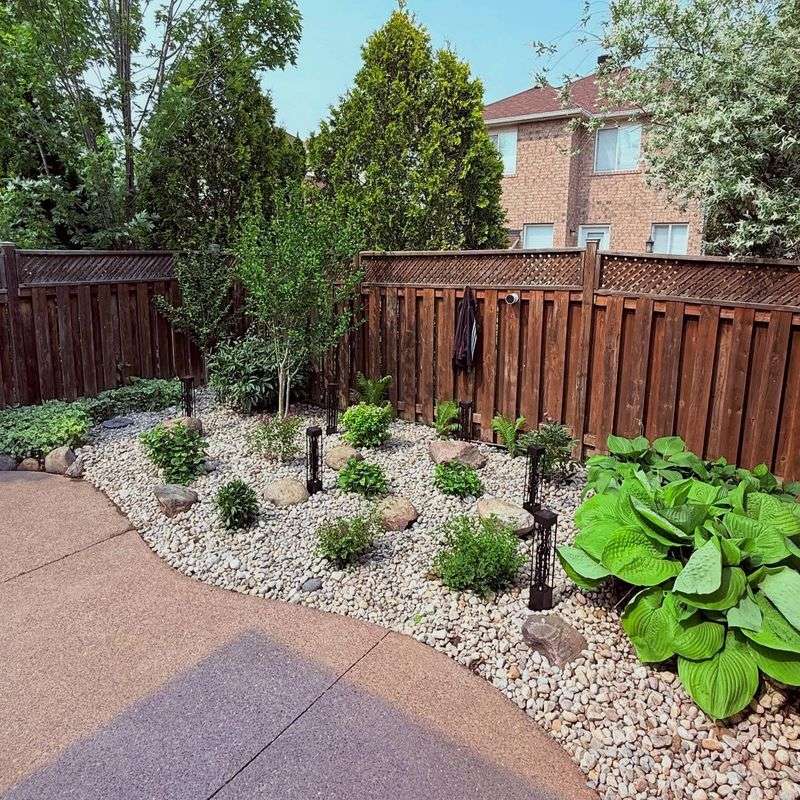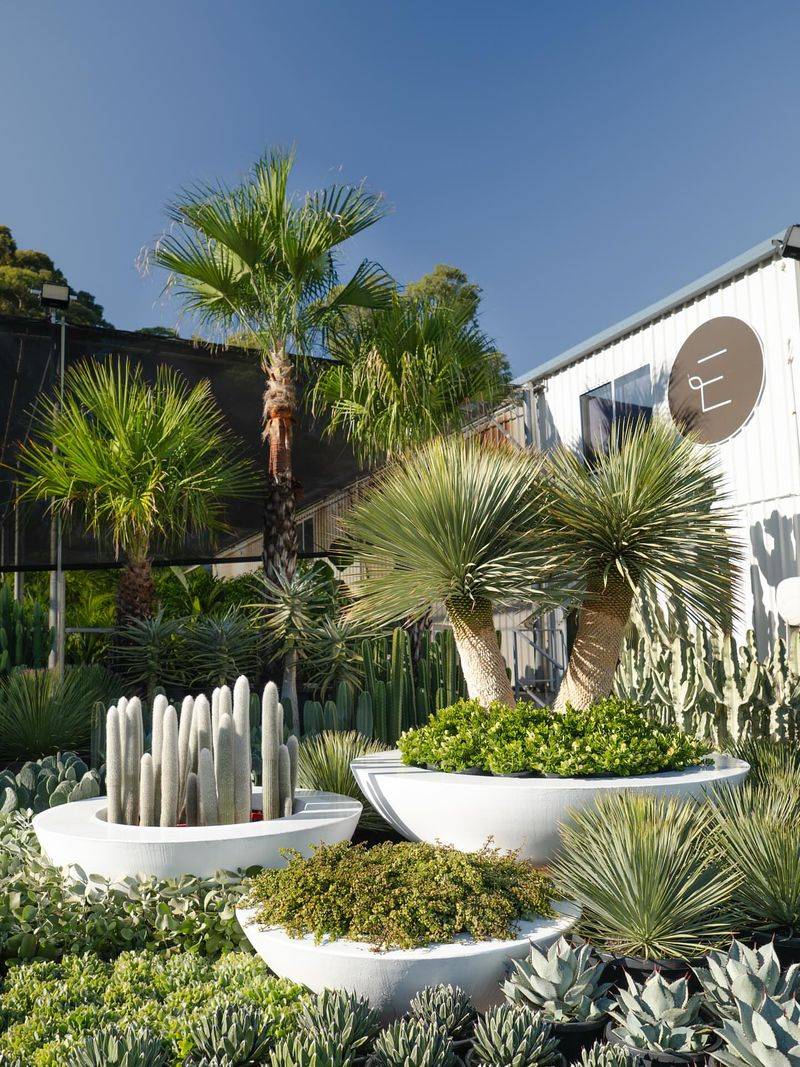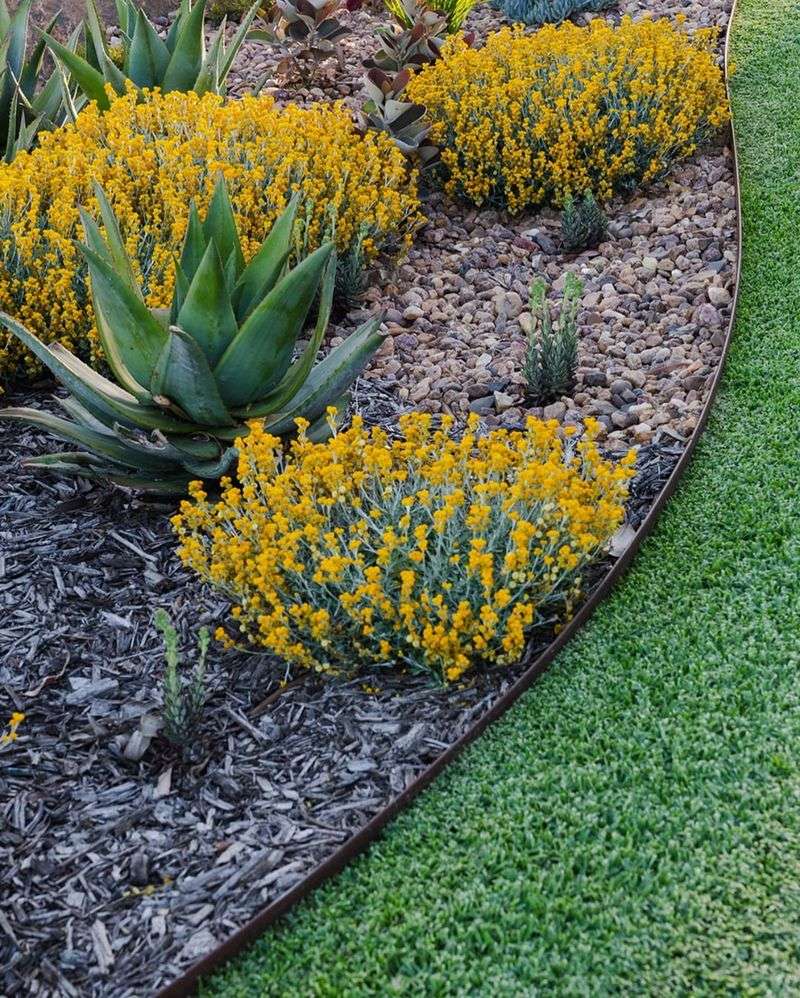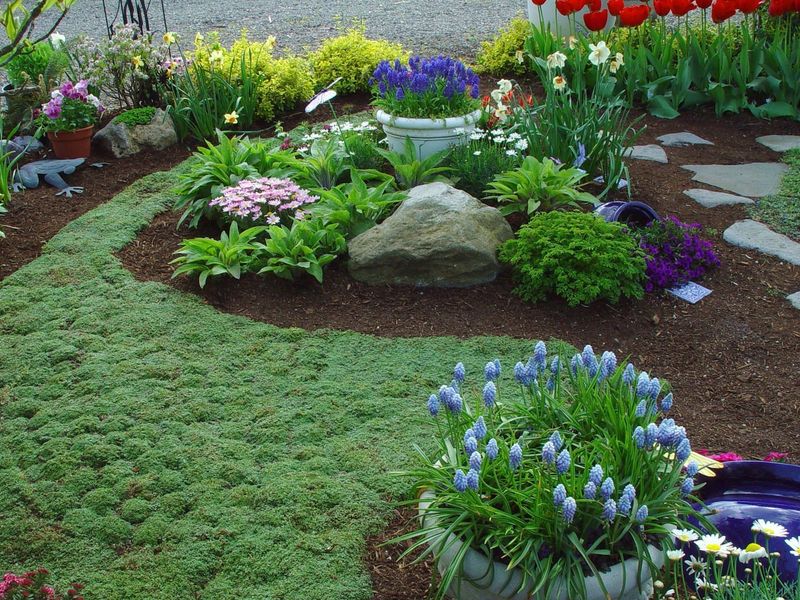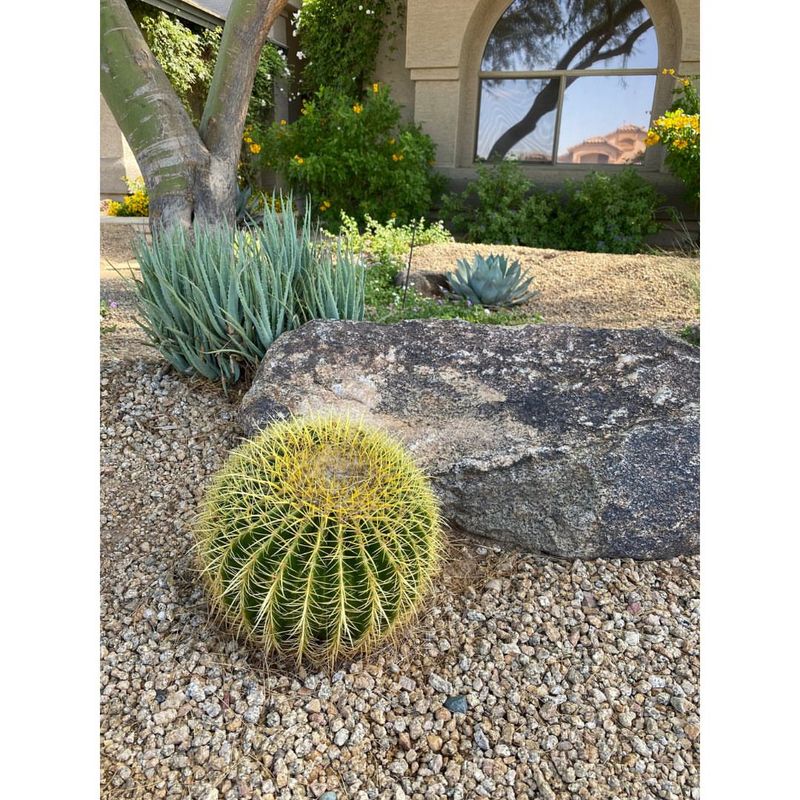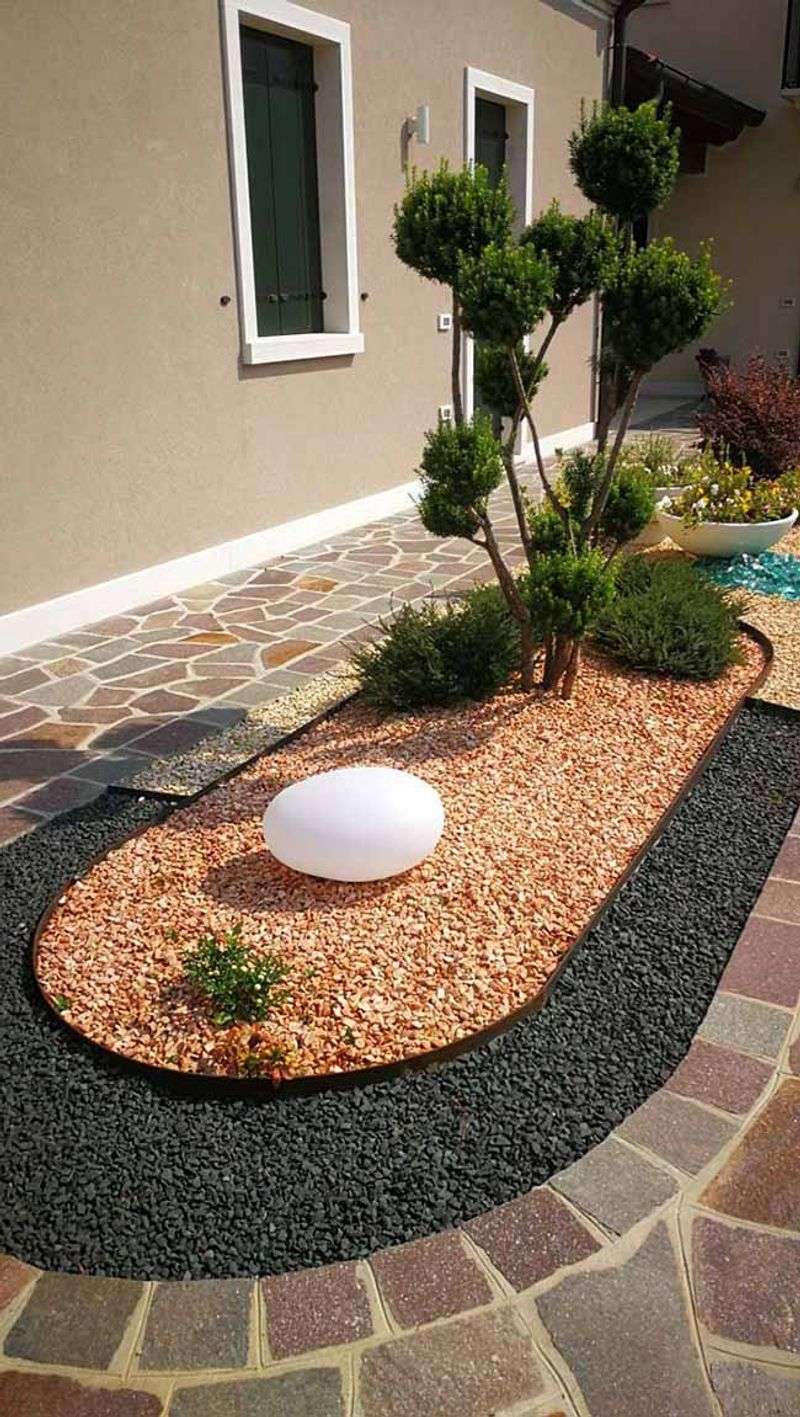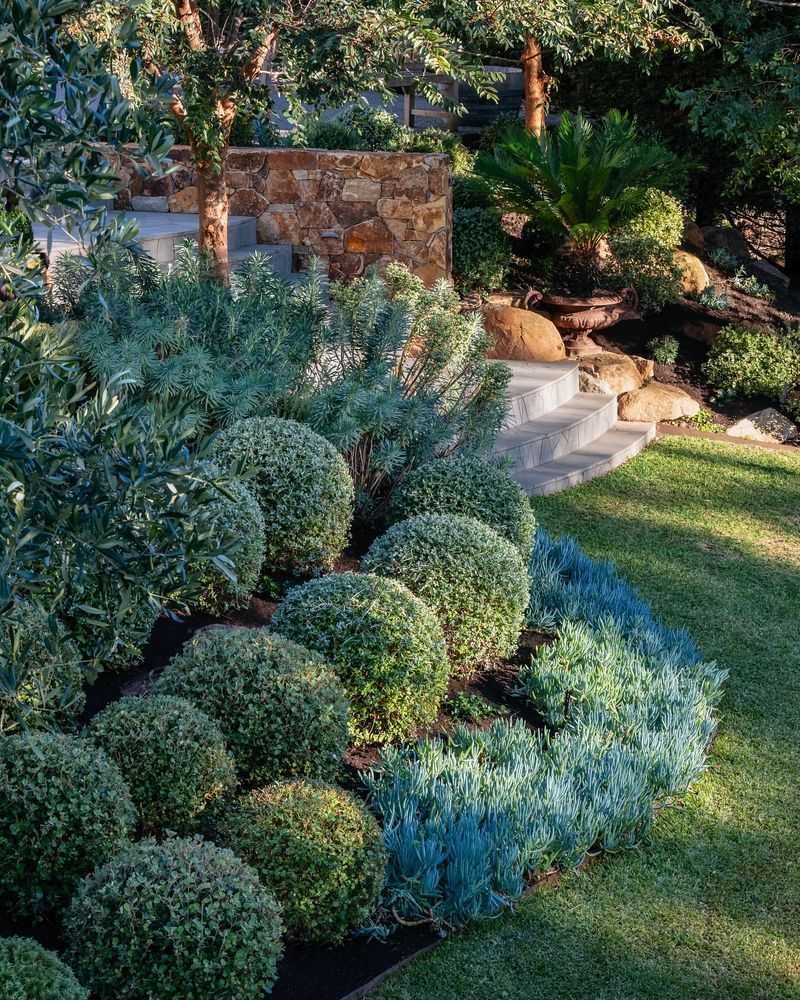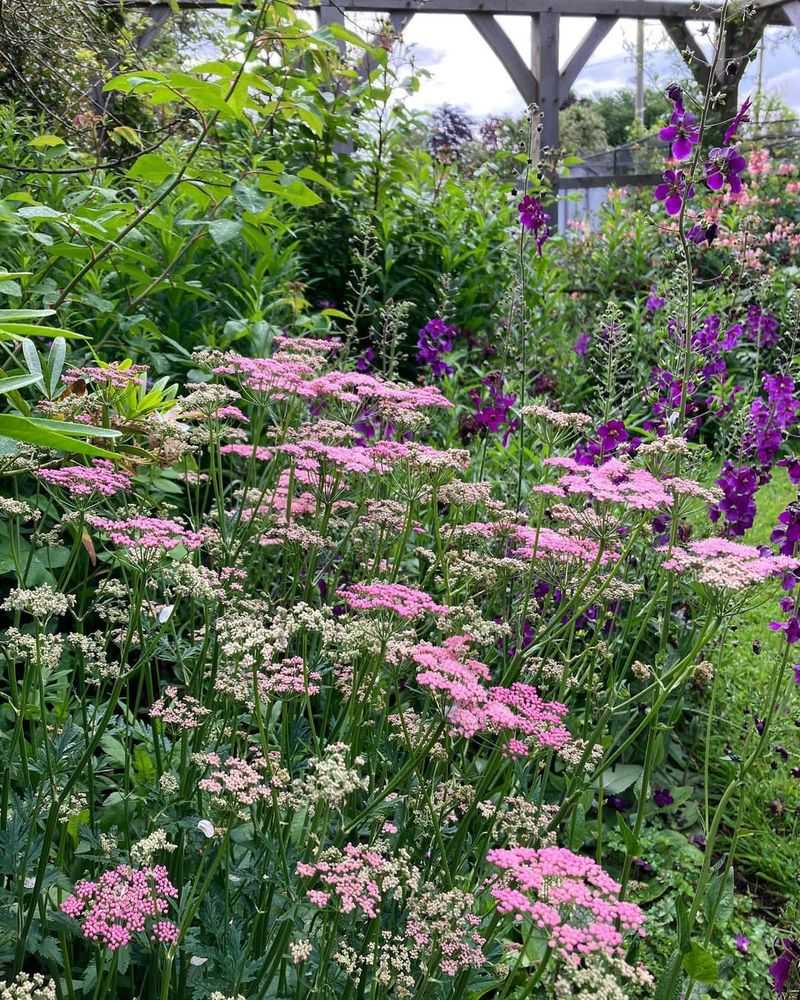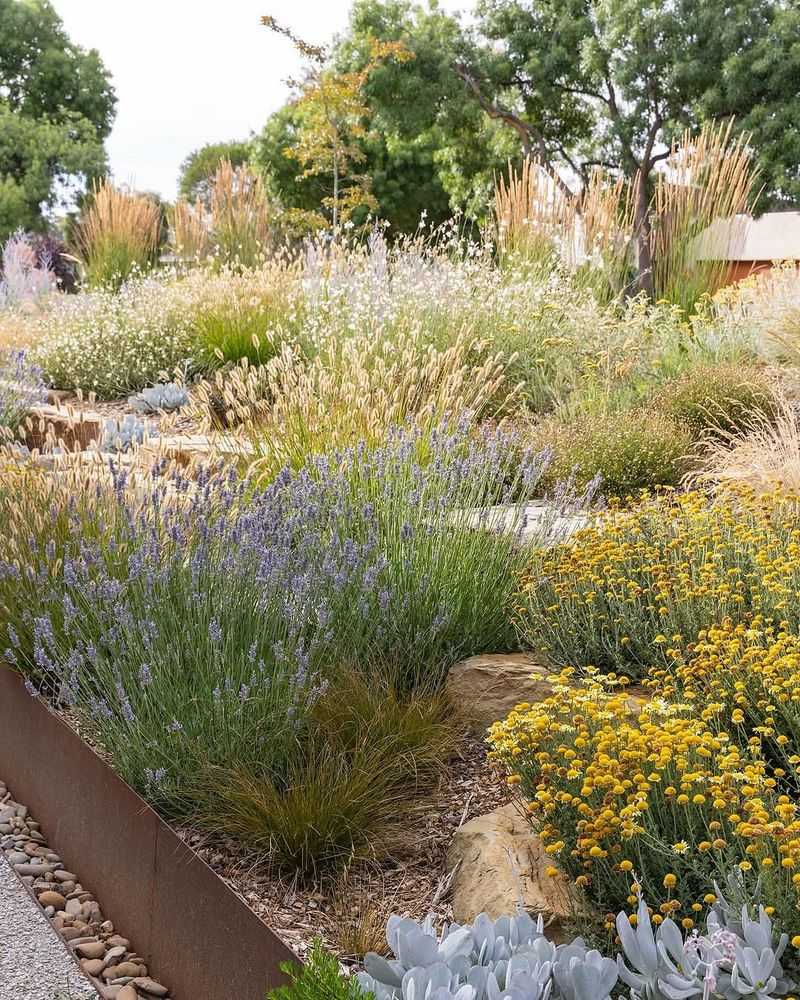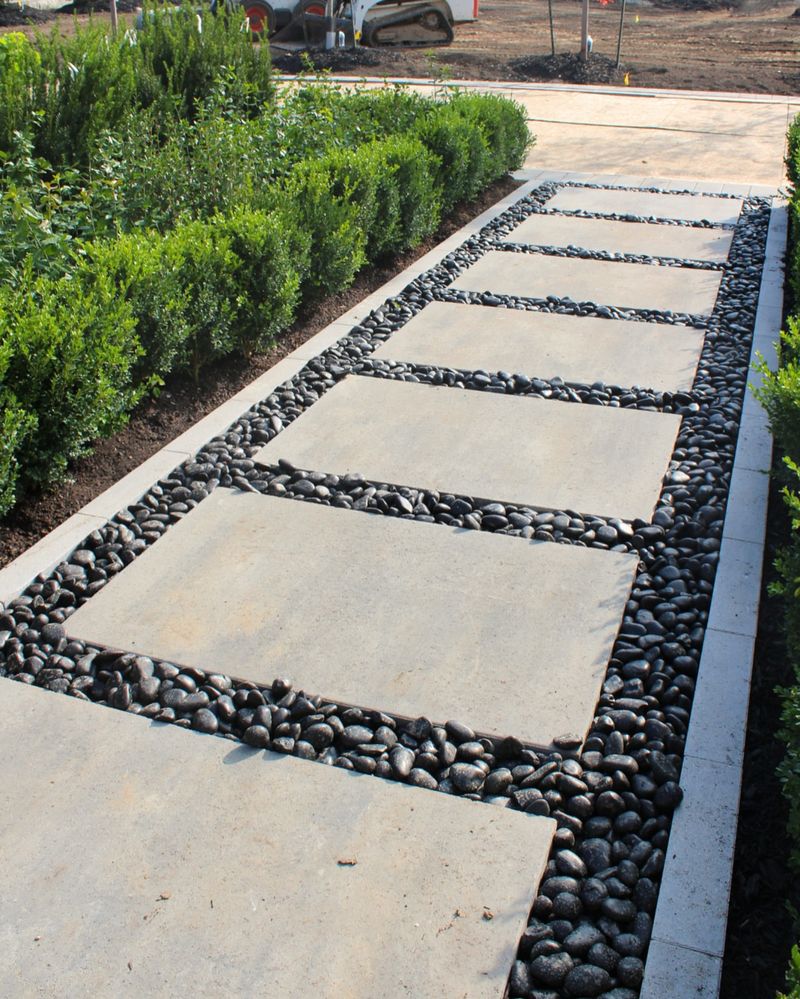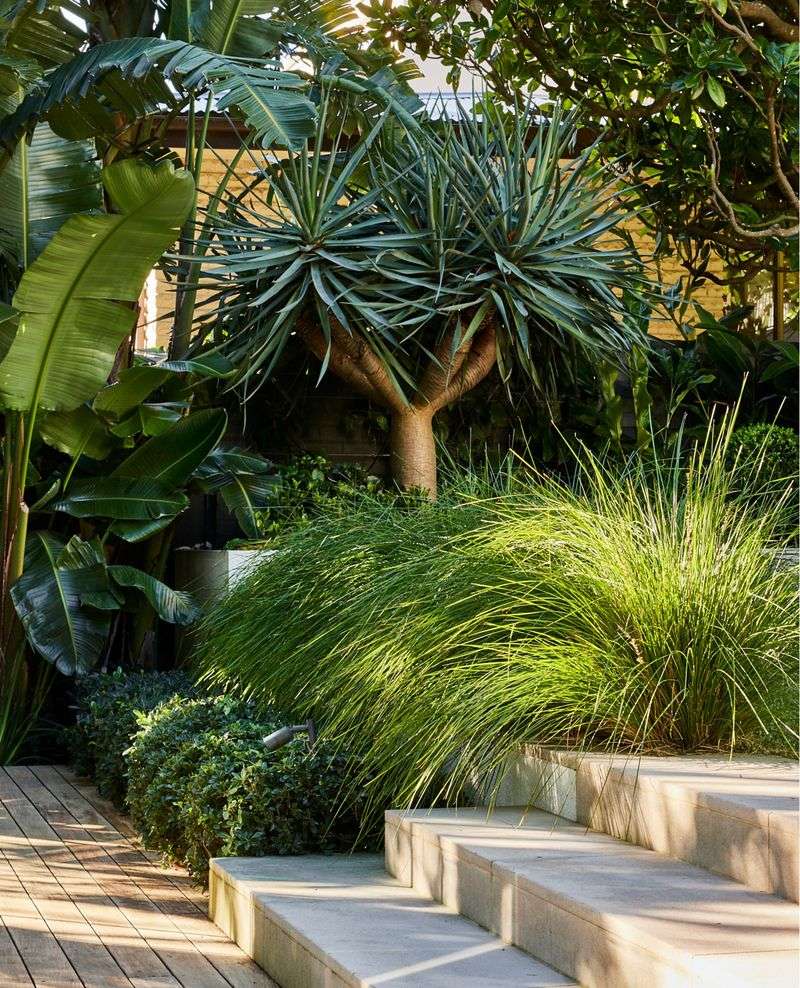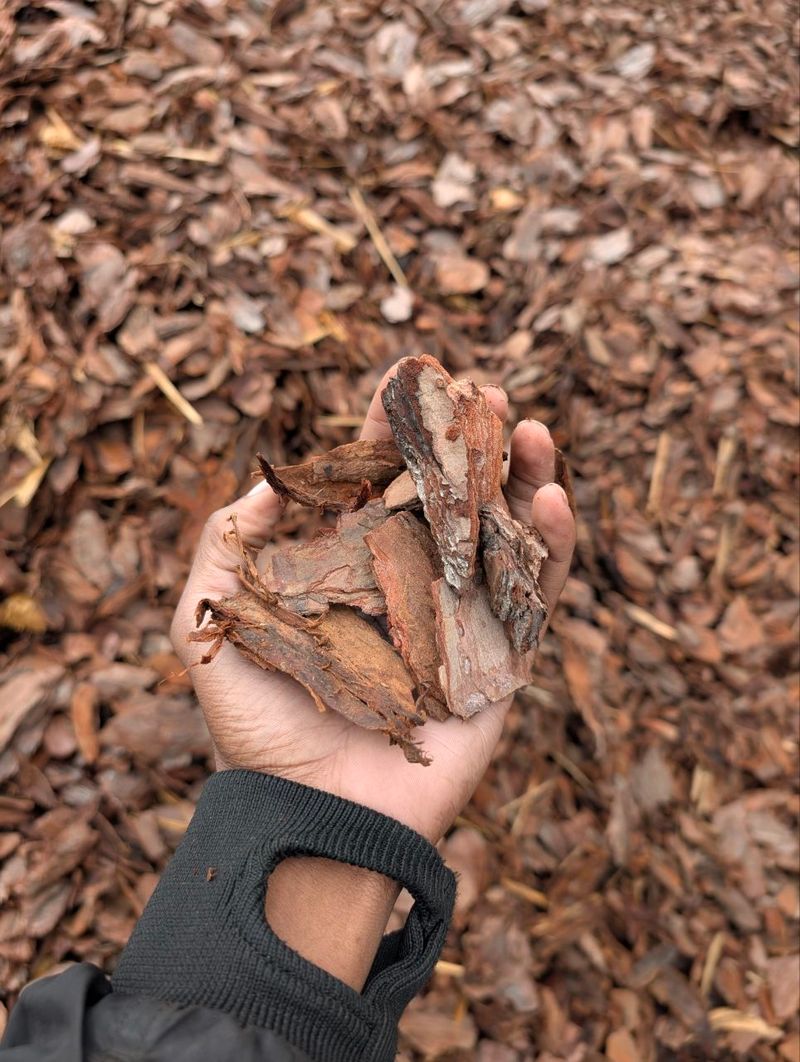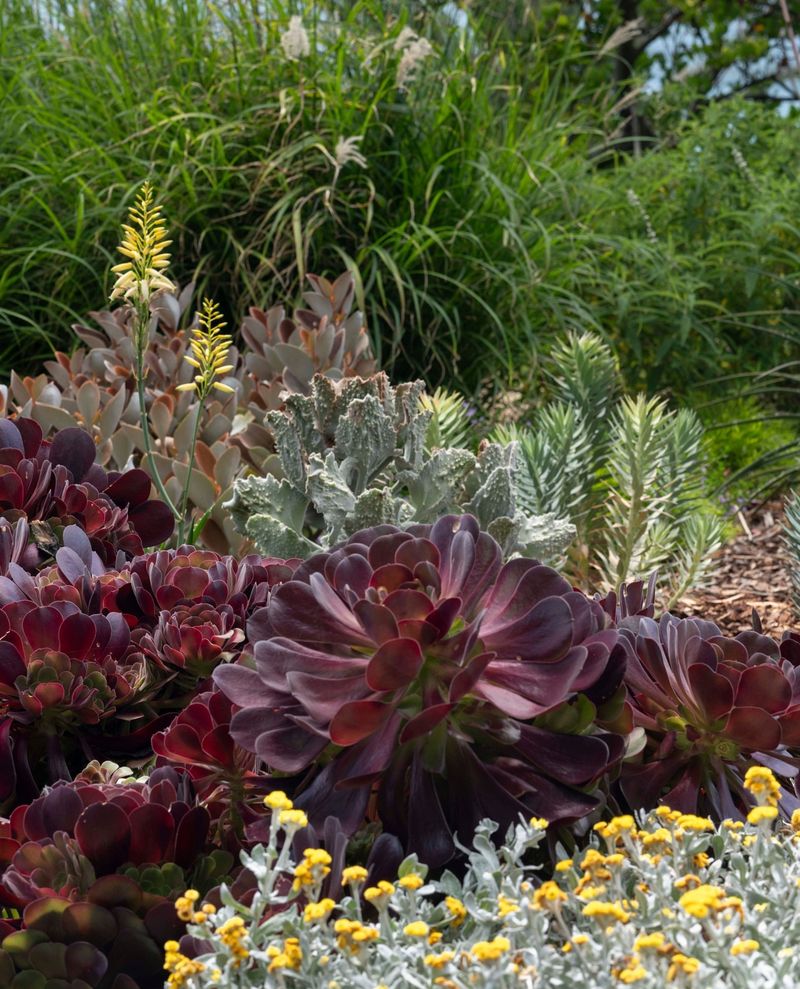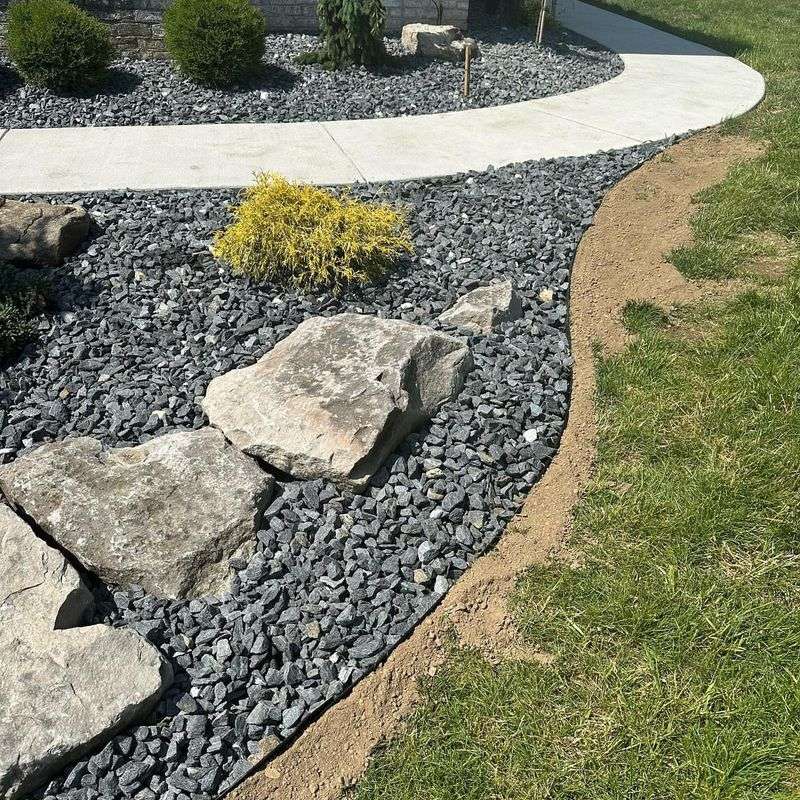Dreaming of a backyard oasis that doesn’t eat up your weekends? With the right landscaping moves, you can dial up the lush vibes without diving into constant pruning, watering, and upkeep. It’s all about choosing beauty that behaves.
Native plants, ornamental grasses, and evergreen shrubs offer big visual rewards with low effort. Mulch cuts down on weeds and keeps soil happy, while raised beds or rock borders bring definition and easy care.
The goal is impact without overwhelm—smart design that lets your garden breathe and thrive with minimal fuss. A little planning now means more relaxing, more enjoying, and way less yard work later.
1. Native Plant Clusters
Plants that naturally grow in your region already know how to thrive with minimal help. Group them in clusters of 3-5 of the same species for a fuller look that requires less fussing.
The root systems support each other, and they’ll naturally resist local pests and weather conditions. I switched to natives three years ago and haven’t needed to replace a single plant since.
They also attract local pollinators, adding movement and life to your garden automatically.
2. Ornamental Grasses Border
Tall grasses create instant texture and movement with almost zero upkeep. Plant varieties like feather reed grass or fountain grass along borders to add height and softness.
Most need cutting back just once yearly, usually in late winter. The rest of the time, they sway beautifully in the breeze, catching light and creating natural screens.
My fence line transformed completely after adding miscanthus – it looks intentional and full year-round.
3. Gravel Garden Beds
Replacing traditional mulch with decorative gravel creates an instant upgrade that lasts for years. Unlike wood mulch that breaks down annually, stone stays put and maintains its color.
Choose larger stones (3/4 inch or bigger) so leaves blow across rather than getting trapped. Small plants look more substantial emerging from stone, creating an established garden feel.
The contrast between plants and stone makes even sparse plantings appear deliberate and designed.
4. Oversized Planters
Large containers make an immediate impact while keeping plants contained and easier to manage. Group three differently-sized pots with just one plant type in each for a designer look without the fuss.
Drought-tolerant plants like agave or succulents in big pots look purposeful and sculptural. The scale trick works everywhere – what seems sparse in the ground looks perfect in a contained space.
Bonus: you can position them to fill bare spots instantly without digging.
5. Defined Bed Edges
Clean, crisp edges between lawn and garden beds instantly make your yard look more manicured. Steel, aluminum or stone edging creates permanent boundaries that grass roots can’t cross.
The visual line between different areas gives structure to even the simplest plantings. Install it once, and the maintenance benefit lasts for years – no more weekly edge trimming.
After adding metal edging last summer, my garden beds finally look intentional rather than messy where they meet the grass.
6. Groundcover Expanses
Low-growing spreaders fill bare spots and choke out weeds naturally. Plants like creeping thyme, sedum, or ajuga create living carpets that need almost no attention once established.
They’re especially effective under trees where grass struggles. The uniform texture makes the whole area look intentionally designed rather than neglected.
For slopes or hard-to-mow spots, groundcovers eliminate maintenance entirely while adding consistent color and texture year-round.
7. Strategic Boulders
Large rocks create instant focal points that never need watering or pruning. Partially bury them for a natural look that appears to have always been there.
A single substantial boulder can anchor an otherwise simple bed of grasses or ground covers. They also provide vertical interest without the maintenance of shrubs or trees.
The contrast between stone and plants makes both elements stand out more, giving the impression of a fuller, more layered landscape design.
8. Mulch Mounding
Creating subtle height variations with mulch before planting makes even sparse gardens look fuller. Build up areas 8-12 inches higher than the surrounding ground, especially toward the back of beds.
This simple trick adds dimension and makes plants appear more abundant than they actually are. The elevated portions naturally draw the eye and create visual interest.
When I redid my front bed, this technique alone made it look twice as lush while using half the plants I’d originally planned.
9. Structural Evergreens
Slow-growing evergreens provide year-round structure without constant pruning. Plants like dwarf conifers or compact holly varieties maintain their shape naturally.
Position them as anchors at corners or entries where they’ll provide permanent presence. Their consistent form makes seasonal flowers and perennials around them look more abundant by contrast.
Unlike deciduous shrubs that need regular shaping, these maintain their form with minimal intervention, providing the backbone for everything else in your garden.
10. Layered Bed Design
Arranging plants in three distinct height layers creates the illusion of fullness without overcrowding. Start with low groundcovers at the front, medium perennials in the middle, and taller structural plants at the back.
Each layer is visible simultaneously, making the overall planting look denser than it actually is. This approach allows more space between individual plants while still achieving a lush appearance.
The visual depth tricks the eye into seeing abundance even with fewer plants to maintain.
11. Drought-Tolerant Perennial Mix
Combining different textures of water-wise perennials creates visual interest without creating water dependency. Mix feathery plants like Russian sage with broad-leafed sedums and spiky plants like yucca.
The textural contrast makes the grouping look intentionally designed and abundant. These plants thrive on neglect once established, typically needing water only during extreme drought.
My perennial bed featuring this mix has flourished for three seasons with almost no intervention beyond occasional deadheading.
12. Decorative Pathway Borders
Lining walkways with simple, repeating elements creates structure that makes the entire yard feel more designed. Low-maintenance options include river rocks, repurposed brick, or concrete pavers.
The defined edge draws the eye along intended paths and makes adjacent planted areas appear more abundant. Unlike high-maintenance border plants, these hardscape elements never need pruning or deadheading.
They also prevent grass from encroaching onto paths, eliminating the need for regular edging.
13. Optical Plant Spacing
Arranging plants in triangular patterns rather than rows creates the appearance of fullness with fewer plants. This zigzag approach eliminates visible bare soil between plants when viewed from most angles.
The technique works especially well with ornamental grasses and medium-sized perennials. You’ll need roughly 30% fewer plants while achieving a fuller look than traditional grid patterns.
I’ve used this method in my side yard, and visitors always assume I’ve planted more extensively than I actually have.
14. Simplified Color Palette
Limiting your plant selection to 2-3 colors creates a cohesive, designed look that appears more intentional and abundant. Repeated colors throughout the yard tie different areas together visually.
This approach eliminates the scattered, spotty appearance that comes from too many isolated colors. Plants with similar hues naturally appear to be growing in purposeful drifts rather than random placements.
The restrained palette also makes plant shopping easier and prevents impulse purchases that create maintenance headaches.
15. Chunky Mulch Application
Larger mulch pieces like pine bark nuggets or cedar chunks last longer than shredded varieties and create more textural interest. Their substantial size stands up better to weather and stays in place during heavy rain.
The larger pieces also provide more dramatic contrast with plants, making even new gardens look established. Apply it slightly deeper than standard mulch (3-4 inches) for maximum weed suppression.
Since it breaks down more slowly, you’ll only need to refresh it every other year rather than annually.
16. Textural Contrast Groupings
Placing plants with dramatically different leaf shapes next to each other creates immediate visual interest, even with fewer specimens. Combine large-leafed plants like hostas with fine-textured ferns or grasses.
The contrast between textures makes each plant stand out more prominently than when surrounded by similar types. This approach works particularly well in shady areas where flower color is limited.
Even just three contrasting plants grouped together can create a focal point that appears deliberately designed.
17. Landscape Fabric Under Stone
Professional-grade weed barrier beneath decorative stone creates permanently maintenance-free areas that still look intentional. Unlike mulched beds that invite weeding, properly installed stone with fabric underneath requires almost no ongoing care.
These areas work particularly well for transitions between different yard sections or along foundations. The clean, defined appearance contrasts nicely with planted areas, making both elements look more purposeful.
For maximum effectiveness, overlap fabric seams by at least 6 inches and extend it slightly up the sides of adjacent structures.

